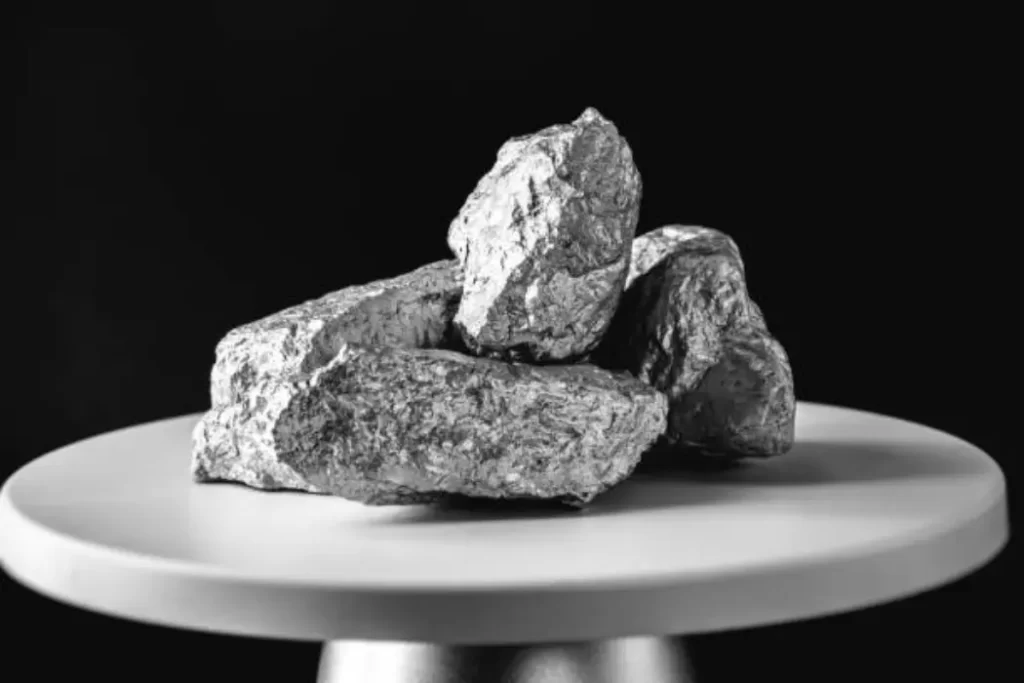Aluminium, a versatile and essential metal used in various industries, has become a critical part of our everyday lives. From transportation to packaging, construction to electronics, aluminium plays a significant role in modern society. But have you ever wondered where aluminium comes from and how it is extracted? Exploring aluminum ore provides valuable insights into its geological origins and the complex extraction process, making it a significant source of knowledge on the production of aluminum metal. In this article, we will delve into the origins of aluminium ore and the extraction process, shedding light on this remarkable metal’s journey from the depths of the Earth to our everyday applications.
Aluminum ore, also known as bauxite, is the primary source of aluminum metal.
Aluminium is the third most abundant element on Earth’s crust, constituting approximately 8% by weight. It was first discovered in the early 19th century and quickly gained popularity due to its remarkable properties, such as being lightweight, corrosion-resistant, and highly conductive. However, before aluminium can be used in various industries, it must undergo a series of processes, starting with the extraction of aluminium ore.
What is Aluminium Ore?
Aluminium ore refers to the naturally occurring minerals or rocks that contain a high concentration of aluminium compounds. The primary source of aluminium ore is a rock called bauxite, which is an essential ore for aluminium production. Other types of aluminium ore include laterite and cryolite, though they are relatively less common.
The Geological Origins of Aluminium Ore
The geological formation of aluminium ore is a fascinating process that takes millions of years. It typically occurs in tropical or subtropical regions where the weathering of rocks, combined with the leaching action of water, contributes to the enrichment of aluminium minerals.

Major Aluminium Ore Deposits Around the World
Bauxite Deposits
Bauxite is the most abundant and economically significant aluminium ore. It is primarily composed of aluminium minerals such as gibbsite, boehmite, and diaspore, along with various impurities. Major bauxite deposits are found in countries like Australia, Guinea, Brazil, and Jamaica.
Lateritic Deposits
Lateritic deposits are another source of aluminium ore, formed in areas with high rainfall and warm temperatures. These deposits often contain aluminium-bearing clay minerals and are found in regions like India, Indonesia, and the Philippines.
Cryolite Deposits
Cryolite deposits are rare and occur in specific locations, such as Greenland. Cryolite is used in the production of aluminium and is valued for its unique properties as a flux in the electrolytic reduction of alumina.
Aluminium Ore Mining Techniques
The process of extracting aluminium ore from the Earth’s crust involves various mining techniques:
Surface Mining
Surface mining is the most common method used to extract bauxite deposits, as it requires less energy compared to underground mining. It involves removing the topsoil and overburden to access the ore beneath.
Underground Mining
Underground mining is employed in locations where bauxite deposits are deep beneath the surface. This method is more costly and complex than surface mining.
Open-Pit Mining
Open-pit mining is used for bauxite deposits that are close to the surface but extensive horizontally. Large open pits are created to extract the ore efficiently.
The Extraction Process
The extraction of aluminium from its ore involves two main processes:
Bayer Process
The Bayer Process is used to extract alumina (aluminium oxide) from bauxite. It involves crushing the bauxite and then dissolving it in a hot, concentrated solution of sodium hydroxide. This process ultimately yields alumina hydrate.
Hall-Héroult Process
The Hall-Héroult Process is employed to convert alumina into aluminium metal. In this electrolytic process, alumina is dissolved in molten cryolite and subjected to an electric current, leading to the deposition of aluminium metal at the cathode.
Environmental Impact of Aluminium Ore Extraction
While aluminium is a vital material, its extraction and production have environmental implications. Mining activities can lead to habitat destruction and soil erosion, affecting local ecosystems. However, advancements in sustainable practices are being adopted to mitigate these effects.
Recycling Aluminium
One of the significant advantages of aluminium is its recyclability. Recycling aluminium consumes only a fraction of the energy required for primary production, making it an environmentally friendly choice.
Applications of Aluminium
Aluminium’s exceptional properties make it indispensable in various industries, such as:
- Transportation (e.g., automotive, aerospace)
- Packaging (e.g., cans, foils)
- Construction (e.g., windows, doors, facades)
- Electronics (e.g., smartphones, laptops)
- Machinery and Equipment (e.g., power tools)
The Future of Aluminium
As we move towards a more sustainable future, aluminium will continue to be a crucial material. Advancements in technology and manufacturing processes will likely make aluminium even more versatile, ensuring its relevance in an eco-conscious world.
Conclusion
Aluminium, with its remarkable properties, has transformed the modern world. From its geological origins in bauxite deposits to the intricate extraction processes, aluminium’s journey is one of ingenuity and progress. As we become more mindful of environmental impact, recycling and sustainable practices will shape the future of aluminium production. So, the next time you see aluminium in your daily life, remember the fascinating story behind this versatile metal.
FAQs
Is aluminium a naturally occurring metal?
Yes, aluminium is naturally occurring and is the third most abundant element on Earth.
Which is the primary source of aluminium ore?
Bauxite is the primary source of aluminium ore.
What is the Hall-Héroult Process?
The Hall-Héroult Process is the electrolytic process used to convert alumina into aluminium metal.
Can aluminium be recycled?
Yes, aluminium is highly recyclable and can be reused with minimal energy consumption.
What are the major applications of aluminium?
Aluminium is extensively used in transportation, packaging, construction, electronics, and machinery industries.


